Campus News
Brain farm
UCSC’s fertile environment has nurtured an impressive crop of creative projects and thinkers.

UC Santa Cruz is a rich environment for growing things. Coastal live oak, giant slugs, raccoons, and redwoods flourish. The campus is home to deer so tame, they might come up and nip a tortilla chip from your fingers. Organic vegetables do well up here, too.
But UCSC is fertile ground for far more than flora and fauna. It’s also a place where animated films, prizewinning novels, and tomorrow’s computer games germinate and thrive. Sometimes, the projects begin on campus. Other times, the university inspires projects that flourish elsewhere.
These people and projects may not seem to have much in common. But all of them are connected in one important way:
Each flourished because the UCSC campus gave them the necessary nutrients to thrive.
Perhaps it was the presence of other colleagues offering inspiration and critical insight. It might have been the way the campus encourages people to question assumptions, recognize a rising talent, and draw outside disciplinary lines.
Or it could be the sheer beauty of the campus, and the way the setting inspires creativity.
Here’s a quick look at some of the talents, projects, and creative expression that have prospered at UCSC. But first, a disclaimer:
This is by no means an exhaustive list; consider it a crop sampler.
Growing games
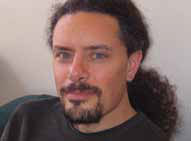 Michael Mateas
Michael MateasUCSC is known for an atmosphere that allows creative work to happen and prosper. That’s what lured innovative game designer Michael Mateas to campus.
Now the director for UCSC’s Center for Games and Playable Media, he is planting seeds for a new generation of games. Instead of just preparing students for today’s gaming, he wants them to look beyond the realm of zombie shooters and rescue missions.
“I want innovation and new experiences,” Mateas says. “And I want to get those experiences into the hands of as many people as possible.”
But what does that future look like? Mateas believes it will be a time for “interactive dramas,” self-contained, social network-driven projects featuring fully conversational characters, who will work with players to shape the storyline. Perhaps we’ll get closer to the “holodeck,” the interactive room that sent Captain Jean-Luc Picard and his crew into the Wild West in Star Trek: The Next Generation.
In 2005, a year before his arrival at UCSC, Mateas—along with co-creator Andrew Stern—solidified his reputation with a quirky interactive drama called Façade. Challenging design clichés, it rebelled against the idea of an “open world” game in which characters range across vast spaces. Instead, the action unfolds at an awkward party hosted by the unhappily married Grace and Trip. The player is the third wheel in their nasty disputes.
The New York Times and Atlantic Monthly hailed the game’s innovation, including the unusual depth of its artificial intelligence and the fluent language of its characters. It has much more in common with an Edward Albee play than a Sylvester Stallone movie.
“The game was a contrarian stance,” Mateas says.
Mateas was drawn to UCSC because it was creating an innovative undergraduate degree program—the first of its kind in the UC system—and he saw the campus as a place that was flexible enough to put itself at the forefront of a new field of study. In return, UCSC gave him the resources to recruit strong faculty and establish the Center for Games and Playable Media—one of the largest technical game research groups in the world. The campus also has fostered collaborations with the Art and Digital Arts and New Media departments.
Now Mateas is creating rich soil for students and colleagues to grow ideas of their own, including a soon-to-be-released game called Prom Week, which was designed entirely by UCSC game design graduate students. Mateas and Noah Wardrip-Fruin are the design team’s advisors.
In Prom Week, players try to manipulate characters including the nerdy Zack, who wants to be Prom King. In one scenario, he impresses a classmate, Naomi, by flexing his biceps, only to blow his chances by showing off an ill-timed light saber trick. “Yer weird!” Naomi declares.
In doing so, the player changes the social dynamic of the school, but only to a point.
“You can’t make these characters do anything they don’t want to do,” Mateas says.
Like Façade, Prom Week will be released free of charge.
Roots of greatness
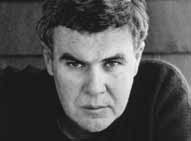 Raymond Carver
Raymond CarverAmerican short story writer and poet Raymond Carver (May 25, 1938–August 2, 1988) is considered a major American writer of the late 20th century and a force in the revitalization of the short story in the 1980s.
When Carver arrived as a lecturer in 1971, the writing scene was thriving. George Hitchcock, influential editor and founder of the literary magazine Kayak, was here. So were authors Jim Houston and Page Stegner.
A master of dialogue, Carver turned conversations into games of misdirection. Dialogue should be “non-sequiturs,” he told his students.
Many early stories of this celebrated writer are sad and bruising, but his brief period at UCSC was productive and enjoyable for him, bolstering his confidence, starting lifelong friendships, and inspiring some of his early works. His friend and colleague, David Swanger, says Carver’s outgoing, low-key personality melded with the writing scene on campus.
“Working relationships were not bureaucratic, official, or competitive,” says Swanger, now a UCSC professor emeritus of education and creative writing. “We were all starting out and we were all in it together, and he was a man whose friendships counted.”
Carver and Swanger frequented a Santa Cruz restaurant that provided free dinners to poets who read their work out loud.
“It was big deal for Ray and me,” Swanger recalls. “Reading was not something we took for granted. It was celebratory.”
“Life spread before Ray like a buffet in Santa Cruz,” writes Carol Sklenicka in her Carver biography. “His letters, typed on university letterhead … convey the excitement of a kid in a candy shop.”
This excitement included Quarry West, the literary magazine Carver launched here.
“This guy who became the American Chekhov was so thrilled about this small university literary magazine that he ran into the cafeteria during lunchtime to show me a review that had been written about it,” Swanger recalls.
Soon after his UCSC stint, Carver became a much-lauded writer, but he stayed in contact with Swanger. Artifacts from that friendship—26 letters, notes, and cards that Carver penned to Swanger—now have a permanent home in UCSC’s Special Collections.
Cross-disciplinary currents
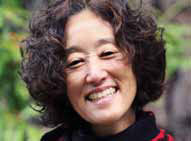 Karen Yamashita
Karen YamashitaAcclaimed writer and UCSC literature professor Karen Tei Yamashita refuses to squirrel herself away when creating fiction. She puts herself in the world, allowing life and learning to inform her work.
This campus turned out to be the ideal place for her creative expression to thrive; UCSC’s world of ideas, and its thinkers from various disciplines on campus, helped inform and grow her work.
In 1997, the year she was hired to teach at UCSC, she began work on her book I Hotel, which was shortlisted last year for the National Book Award.
“It is a small miracle that the long work of this book and the stories of these people and this history were honored by the NBA,” says Yamashita, who believes the book “would not have happened” without her UCSC job.
UCSC gave her access to the Bay Area and the diverse Asian American community that populates her book, which concerns a standoff over evictions at San Francisco’s International Hotel.
Wisdom gleaned from UCSC lectures, conferences, and graduate seminars made its way into her work. So did the scholarship of colleagues like Daniel Linger in anthropology, who shared research about Brazilian migrant workers in Japan, and professor emerita of American studies Judy Yung, who helped her re-create the culture of San Francisco’s Chinatown in the 1960s.
Yamashita found it striking that the book covers the same time period when UCSC began to take shape in the 1960s.
The time correlation is perhaps “not a coincidence,” she speculates now. Some of the ideals that informed the creation of the campus can also be found in her work.
“The founding history of UCSC is embedded in this time period. Those ghosts of change must also be present.”
Incubating Freedom
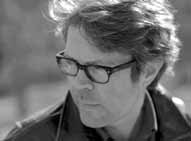 Jonathan Franzen
Jonathan FranzenSome plants require agitated soil. Others grow best with little disturbance. Put bestselling author Jonathan Franzen in the latter category. He famously wore noise-blocking headphones while creating his 2001 National Book Award–winning novel The Corrections.
Franzen craves quiet while at work, and he found that space at UCSC, where he frequently used offices at Cowell College during the years he was working on his critically acclaimed 2010 best-seller, Freedom. The secluded, forested campus turned out to be an ideal spot for him to create. (Franzen does not teach at UCSC, but he lives in Santa Cruz part-time.)
“UCSC is a great place to write fiction, especially in the summer months, when the campus is very quiet and the days often start out very foggy,” writes Franzen via e-mail. “I can go from the fog of sleep and up the foggy drives to a dark office, put in a good morning in the dream state of fiction-writing, and then emerge to a beautiful blue sky in the early afternoon.”
Franzen is not the only creative mind to find safe haven at UCSC. For example, Tom Lehrer—the fearless musical satirist of the Cold War era—turned his back on his career and later became a UCSC math lecturer while collaborating on campus musical productions. The late Spalding Gray, actor and comic monologist, took part in a performance group workshop on the UCSC campus in 1978 and performed here well into the ’90s.
Seeds of magic
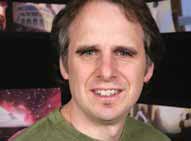 Mark Henne
Mark HennePixar animator Mark Henne adds weight, impact, and movement to digital characters—and his years at UCSC led to a creative partnership that continues to inspire his work more than 20 years later.
Consider the robots swarming through the Axiom starliner, and the overweight human “guests” zipping around in self-propelled lounge chairs in the computer-animated movie Wall-E.
In 1990, Henne graduated from UCSC’s computer science masters program, where the seedlings of his Pixar career were planted. Much of his current work grows out of his mentorship with Jane Wilhelms, the UCSC professor who stretched his understanding of animation’s potential.
He remembers Wilhelms investigating the possibilities of movement during a summer conference he attended. She had animated gymnast characters twirling on parallel bars, and boxy, bug-like beings swarming through an environment.
“She wasn’t directing their path,” Henne says. “It was kind of an AI (artificial intelligence) approach where they somehow could reason about where they were and the obstacles in front of them.”
Her ideas influenced Henne, who still thinks about crowd dynamics when animating groups of characters. To show crowd movement, he says, you must start with the individual and build outward.
The classic example is a flock of birds. The flock doesn’t have a thought process, he says. The amalgamation of individual behaviors creates the crowd’s behavior: “Follow my neighbor but don’t let them get too close.” “If a gull has a fish, let’s try to take it.”
Henne, who wrote his UCSC master’s thesis about flexible digital skin for human characters, does not believe in technology for its own sake. But by showing him the possibilities of animation, UCSC taught him how to captivate a movie audience.
Sound of silents
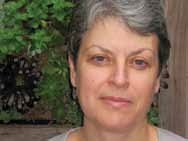 Shelley Stamp
Shelley StampThe UCSC campus helped film and digital media professor Shelley Stamp—an expert on silent movies and early women filmmakers— start a small project that grew into an international franchise.
Along with her former colleague Amelie Hastie, now an associate professor at Amherst College, she coordinated a conference that would draw 60 film scholars to explore and celebrate the remarkable—but often overlooked—contributions of women to the silent films of the early 20th century.
The conference was the first of its kind. For years, women’s early contributions to film were neglected in film studies, in spite of the astonishing amount of influence and creative control they had in the industry.
But the idea took off. Since then the conference, designed as an open and friendly place to share research and ideas, spread from Santa Cruz to Montreal, Guadalajara, Stockholm, and Bologna. Another Women and the Silent Screen conference is already planned for Melbourne, Australia, in 2013.
UCSC’s long-standing, pioneering support for feminist scholarship made it a logical launching pad for the series of conferences, said Stamp.
“And although my current research takes me to archives in New York, D.C., and Los Angeles, the community of feminist scholars here provides me with a sustaining and inspiring home base,” she says.
Aside from helping to grow a conference, Stamp helps her young UCSC students grow future careers by encouraging them to look into filmmaking’s distant past.
“Students come into the program with an incredible level of media literacy,” Stamp continues. “But several of them confessed to me that they’d never seen a black-and-white film, and some have never seen a film more than 10 years old. It is my job and also my great pleasure to get them excited about the older films. Their socks are blown off by the rich cinema culture that existed before 1928.”
Clearly, the students are paying attention.
One former student is the archivist at Francis Ford Coppola’s American Zoetrope Films. Another is vice president for development at Warner Bros. Pictures.
“The best students recognize that you can’t move forward without seeing what came before you,” Stamp says.